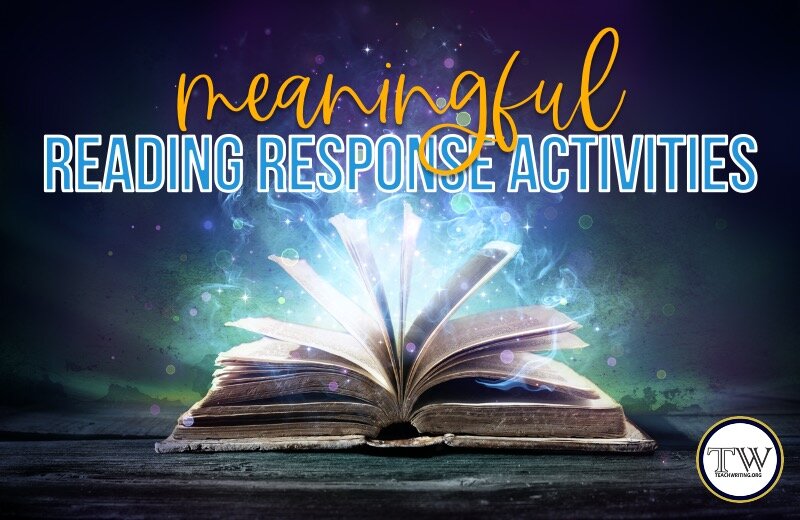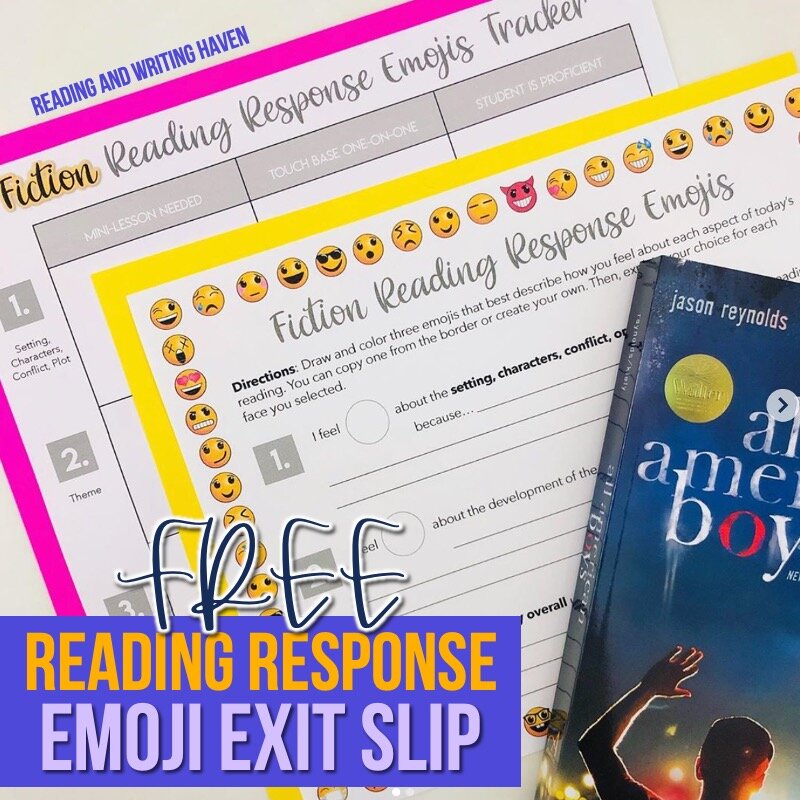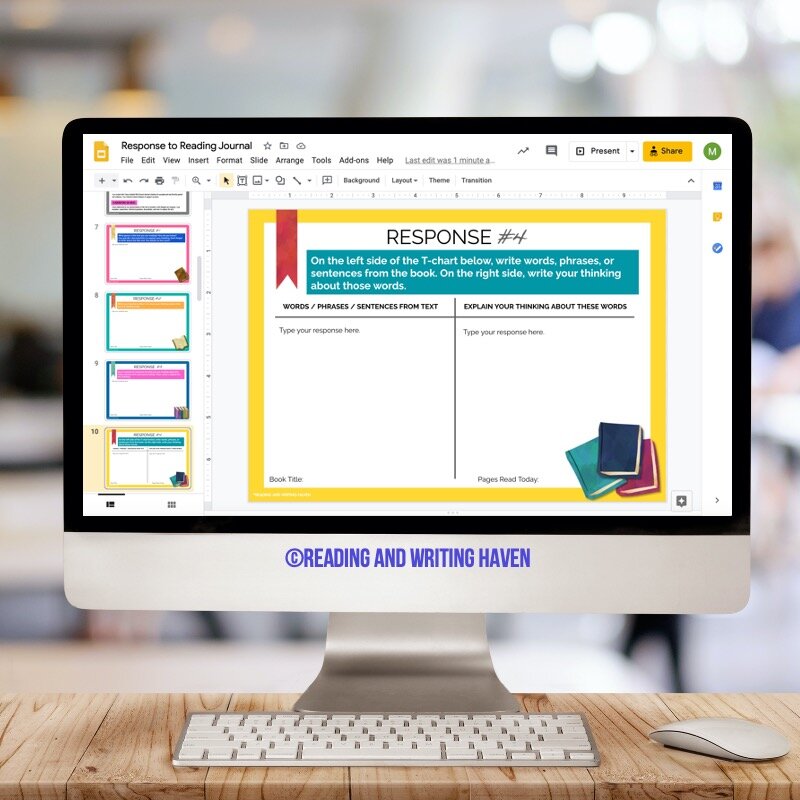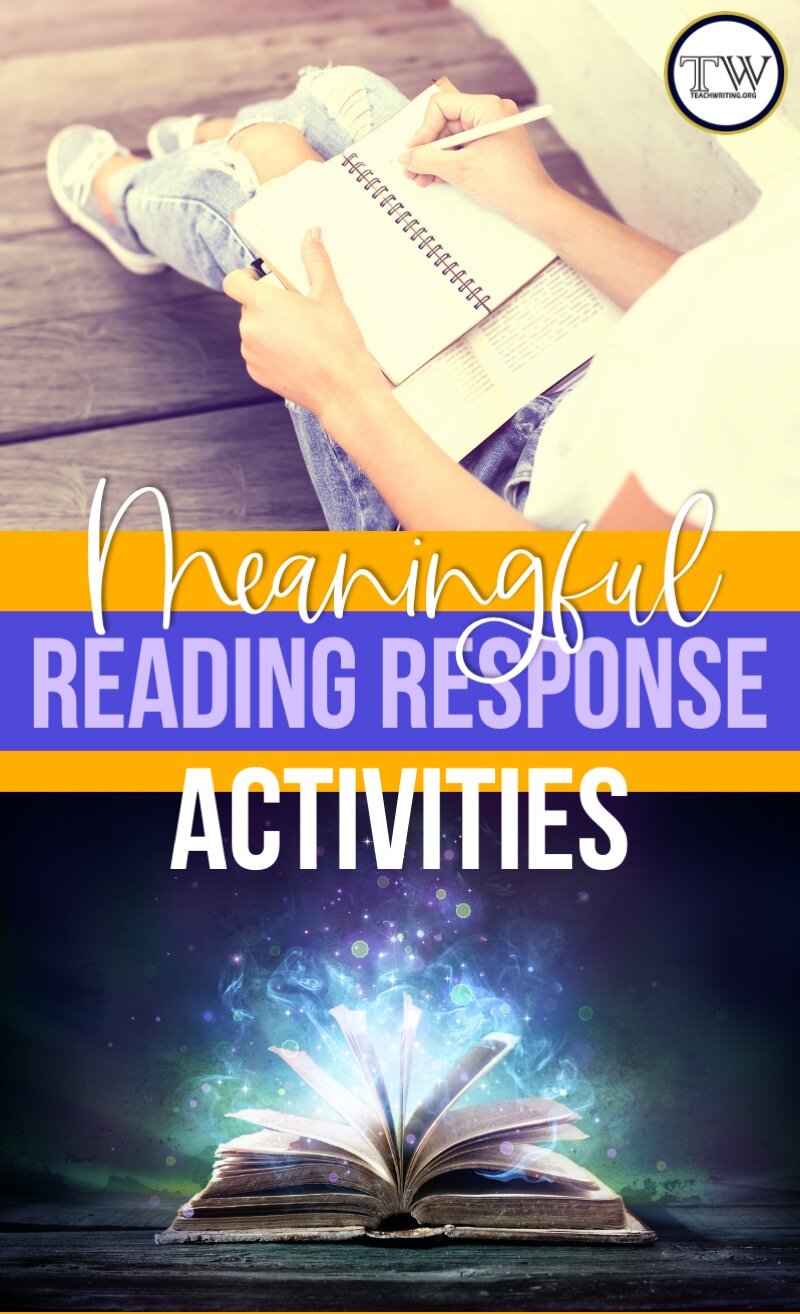5 Creative Response to Reading Activities
Your students are reading. Hooray! Writing about reading has research-proven benefits, and it’s important that we ask students to respond to reading on a regular basis. Those responses don’t always have to be formal, though. Let’s take a look at some ways we can engage students in creative written responses to reading.
BOOKSNAPS
Booksnaps are not traditional writing assignments. Basically, students snap a photo of a page they are reading and reflecting upon. The writing portion comes in when students show - through emojis, sentences, symbols, hashtags, etcetera - how they are thinking about the what they are reading.
The goal of many booksnaps is to help students make connections and think more deeply, but I’ve also seen them used for other purposes. Ideally, when a student looks back on a booksnap a year or so after reading that text, he or she can still remember what they read on that page and why they reacted to it in that particular way.
Want to introduce them to students? I wrote out the details in this introduction to booksnaps blog post.
social media posts
Why not leverage what is relevant to students? Social media seems to be ubiquitous for all ages. Teachers can ask students to demonstrate command of literary element analysis through social media style posts.
For example, if students create a Spotify playlist for a text, they can talk about how the songs overall relate to the theme of the story. During reading, students might choose a song that relates to the current mood, character development, setting, internal conflict, or plot events. Asking students to elaborate on their choices gives us a window into their thinking.
ONE PAGERS
With one pagers, students represent as much of their understanding as possible on (as the name indicates…) one blank page. They combine drawings, colors, quotes, and responses in a unified manner. Typically, students select an overarching theme and/or symbol to bring cohesiveness to their responses.
One pagers can be a little intimidating if you’ve never created them before. Last year, I experimented with different scaffolding methods to find out what students needed in order to be successful with making them. In doing so, I found that providing a menu of options for what to include was helpful. Also, students appreciated specific brainstorming questions, suggestions, and space.
One pagers are perfect for responses to both fiction and nonfiction texts. If you want to know more about how I scaffolded one pagers for my students, you can read this post. Or, check out this article if you’re looking for digital solutions.
JOURNAL PROMPTS
With the right prompts, journaling about reading can be fun. I use journal prompts as ways to check in with my students during choice reading units. They give me insight as to how students are thinking about their books as well as whether or not they are able to pull textual evidence to shape their responses.
We don’t always need to grade journal prompts, but when we do, we need something quick and easy. They aren’t essays, so we don’t want to sit for hours grading them like they are. One solution I’ve found is to embed a simple rubric at the bottom of the page so that expectations are clear for students and grading is quick for me. Another quick tip is creating a common comment bank you can copy and paste from. No sense re-inventing the wheel when your feedback is targeted on a specific concept!
GRAPHIC ORGANIZERS
During reading, students can use graphic organizers to help them focus on targeted skills. For instance, if we want them to work on comprehension, we can give students graphic organizers that prompt thinking about summarizing, inferring, visualizing, cause and effect, and more!
Graphic organizers are also helpful for scaffolding complex or multi-step standards. In order for students to analyze how dialogue impacts suspense and action in a story, they first need to consider what characters are saying as well as the mood of the story. Try these digital literary element graphic organizers with middle and high school students.
We can ask students to respond to reading in so many different ways. Why not make some of them creative? Whenever possible, use response-to reading assignments to deepen students’ love for both reading AND writing.
RELATED POSTS:
7 engaging post-reading activities (reading and writing haven)
Creative Writing Projects (Language Arts Classroom)
Daily Writing Prompts to Inspire New Ideas (Teachwriting.org)
SPOTLIGHT RESOURCE:
Engage secondary students with this unique creative writing assignment - a poetic response to nonfiction texts.
ABOUT THE AUTHOR:
Melissa is the creator of Reading and Writing Haven and a collaborative blogger on Teachwriting.org.
A middle and high school English teacher for over a decade now turned instructional coach, Melissa is an avid reader and writer, and she loves sharing ideas and collaborating with fellow educators. Melissa use her degrees in English, Curriculum & Instruction, and Reading as well as her Reading Specialist certification to ponder today’s educational issues while developing resources to help teachers, students, and parents make learning more relevant, meaningful, and engaging.
When she's not teaching, Melissa lives for drinking a good cup of coffee, loving on her family, working out, and contemplating the structure of a sentence as well as how she can lead her students to deeper reading comprehension (Melissa's true nerdy passions).
Visit Melissa on Instagram, Facebook, or Twitter for English teacher camaraderie and practical, engaging teaching ideas.






